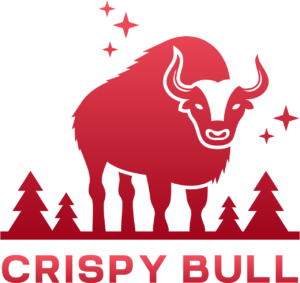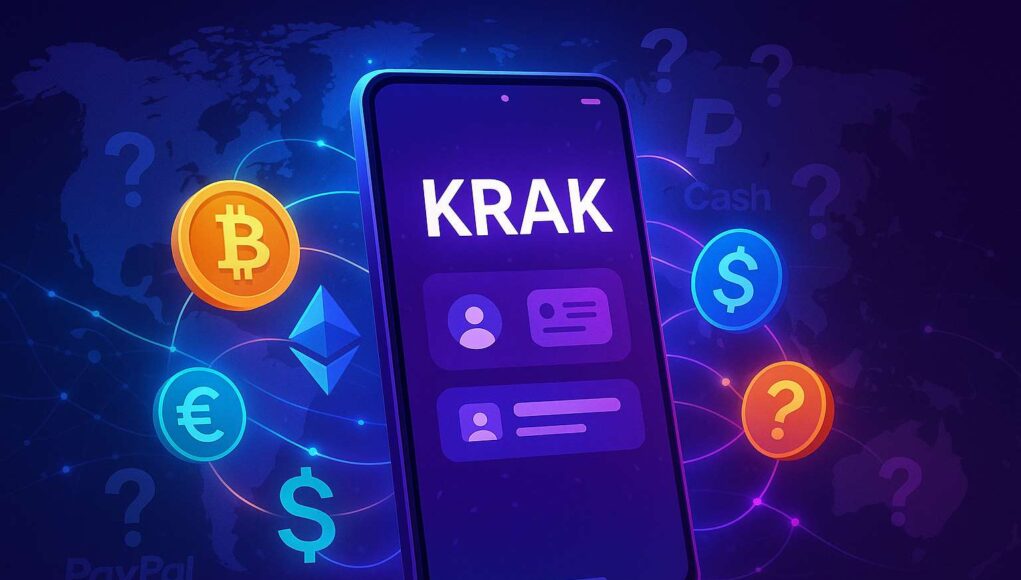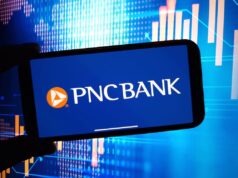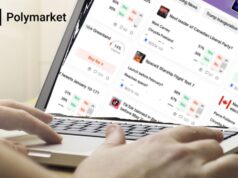Kraken has entered the global fintech race with a bold new offering: the KRAK app, an all-in-one platform for peer-to-peer crypto transfers, fiat payments, and high-yield digital wallets. With support in over 110 countries, the Kraken KRAK app positions itself as a formidable PayPal crypto alternative, aiming to merge the best of decentralized finance with the ease of modern digital banking.
This marks a major step in Kraken’s bid to compete directly with fintech heavyweights like PayPal, Venmo, and Cash App; only this time, crypto takes center stage.
What Is the KRAK App?
KRAK is not just another payment app. Described as a Kraken global money app, it’s designed to simplify the way people send crypto globally and move fiat across borders. All of this happens within a single, intuitive interface.
The Kraken payments app enables:
- Free peer-to-peer transfers of crypto and fiat
- Yield-bearing accounts with potential earnings up to 10%
- Instant global payments with minimal fees
While it leverages Kraken’s infrastructure, the KRAK brand is independent. This signals Kraken’s intent to go mainstream beyond its exchange roots.
Kraken’s Competitive Pitch: Disrupting Fintech from Within
Kraken isn’t hiding its ambition. The KRAK app vs PayPal comparison is built into the product’s DNA. Legacy platforms rely on centralized systems and region-bound frameworks. In contrast, KRAK champions borderless crypto payments, crypto self-custody, and financial sovereignty.
From a functionality standpoint, it’s shaping up to be KRAK vs Cash App. One critical difference: KRAK integrates decentralized infrastructure and yield mechanics.
Key differentiators include:
- Access to both traditional and digital currencies
- Control over private keys (for supported assets)
- A non-custodial roadmap in future updates
In a world where apps like Venmo and PayPal charge fees and impose regional limits, Kraken wants KRAK to serve as a crypto payment platform that works anywhere, anytime.
The 10% Yield Pitch: Real Incentive or Risky Play?
Among KRAK’s most attention-grabbing features is its high-yield crypto app functionality. It promises users up to 10% returns by opting into staking or savings services within the app.
However, Kraken has yet to fully disclose the underlying mechanisms. Yields might be sourced from DeFi protocols, on-chain staking, or other financial products. This lack of clarity raises questions about risk exposure and sustainability. That’s especially important in a post-Celsius, post-Terra market.
Still, the pitch is strong: earn yield on crypto and earn interest with crypto while enjoying seamless payments.
Global Reach: 110+ Countries and Counting
Unlike region-locked fintech apps, Kraken’s KRAK global money app model is already live in over 110 countries. From North America to Southeast Asia, Kraken targets underserved markets. In these regions, crypto fiat payments can help fill the gaps left by legacy banks.
Australia is seeing a phased rollout, and more regional integrations are planned. The goal: a truly borderless app that supports local currencies alongside crypto. There are no artificial limitations or region-based restrictions.
In Europe, Kraken’s expansion gets a boost from a major regulatory win. The company was recently approved under the Markets in Crypto-Assets (MiCA) framework. The MiCA license allows Kraken to operate legally across all EU member states under one rulebook. It eliminates fragmented country-by-country compliance.
>>> Read more: Kraken Crypto eyes IPO with $100M Pre-IPO Funding Plan
This makes KRAK one of the first fully compliant crypto payment apps in the European Union. It also gives Kraken a first-mover advantage in one of the world’s most regulated financial regions.
Regulatory Readiness in a Fragmented World
Operating across so many jurisdictions means Kraken must meet a patchwork of global compliance regimes, but the KRAK app is designed to handle this. It accommodates both KYC/AML requirements and Kraken’s long-standing compliance-first reputation.
In the EU, Kraken’s new MiCA license provides broad legal permission to offer crypto custody and payments. It lets KRAK serve millions of users in the EU with full regulatory clarity. That’s an advantage many crypto fiat payments apps still lack.
As Kraken expands compliance coverage, future updates are expected to enhance crypto self-custody payments. This aligns the app more closely with decentralized finance principles.
While the app’s crypto-native design may invite scrutiny in some regions, Kraken seems ready. It’s confident it can scale KRAK globally without compromising its mission of financial freedom and innovation.
Reactions and Market Outlook
Initial industry reactions range from cautious optimism to full-blown enthusiasm. Some critics are asking for more transparency around the app’s yield mechanisms. Others praise its clean design, crypto-native structure, and payments-first approach.
If KRAK succeeds, it could redefine what a PayPal crypto alternative looks like. It may also force fintech incumbents to adopt Web3 functionality or risk losing relevance.
Conclusion: A Bold Move Into Everyday Finance
With KRAK, Kraken isn’t just a crypto exchange anymore. It’s staking a claim in everyday finance. Kraken’s KRAK app blends convenience, control, and opportunity in a way that legacy players haven’t yet delivered.
>>> Read more: Kraken Launches Ink Blockchain Ahead of Schedule
Can Kraken turn this into a dominant position in the market? That remains to be seen. But one thing is certain: fintech disruption is no longer hypothetical. It’s here and it runs on crypto.
Readers’ frequently asked questions
Is the KRAK app available to users in Europe?
Yes. Kraken’s MiCA license allows it to offer the KRAK app in all 27 EU member states. This ensures full legal compliance across the European Union.
Do users need to complete KYC to use the KRAK app?
Yes. Like Kraken’s main platform, the KRAK app requires identity verification in accordance with global KYC and AML regulations. The process may vary slightly depending on your country of residence.
Can I transfer money between Kraken and KRAK?
Yes. Although KRAK is branded separately, it is built on Kraken’s infrastructure. Users can move funds between the two platforms, but specific transfer options may depend on regional availability and regulatory status.
What Is In It For You? Action items you might want to consider
Sign up for the KRAK app in your region
The app is available in over 110 countries. EU residents benefit from MiCA-backed legal clarity, making it easier to onboard and use Kraken’s KRAK app for crypto-fiat payments with regulatory confidence.
Assess yield options carefully
KRAK advertises yields of up to 10%, but the mechanisms remain partially undisclosed. Users should review all terms and disclosures thoroughly and evaluate the associated risks before opting into earning features.
Compare KRAK to fintech alternatives
Fintech users currently on platforms like Revolut, PayPal, or Cash App should compare transaction fees, custody models, and international support to decide whether KRAK better fits their financial needs.











[…] Kraken’s KRAK app shows that exchanges are moving in the same direction. However, Revolut’s integrated ecosystem […]
[…] crypto prices can change fast even small hidden fees might eat into your profits. To learn how much you’ll pay, try a small transaction as a […]